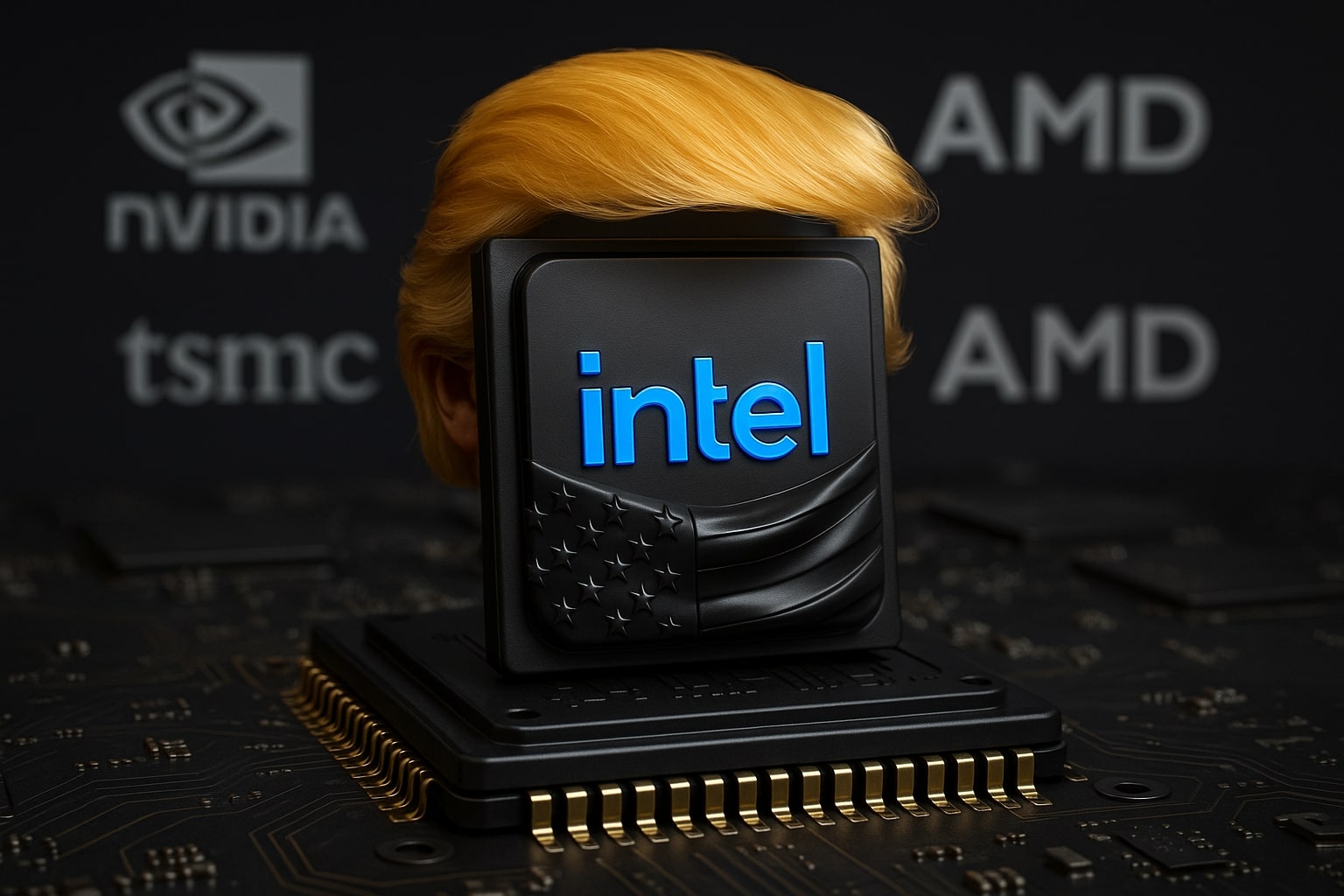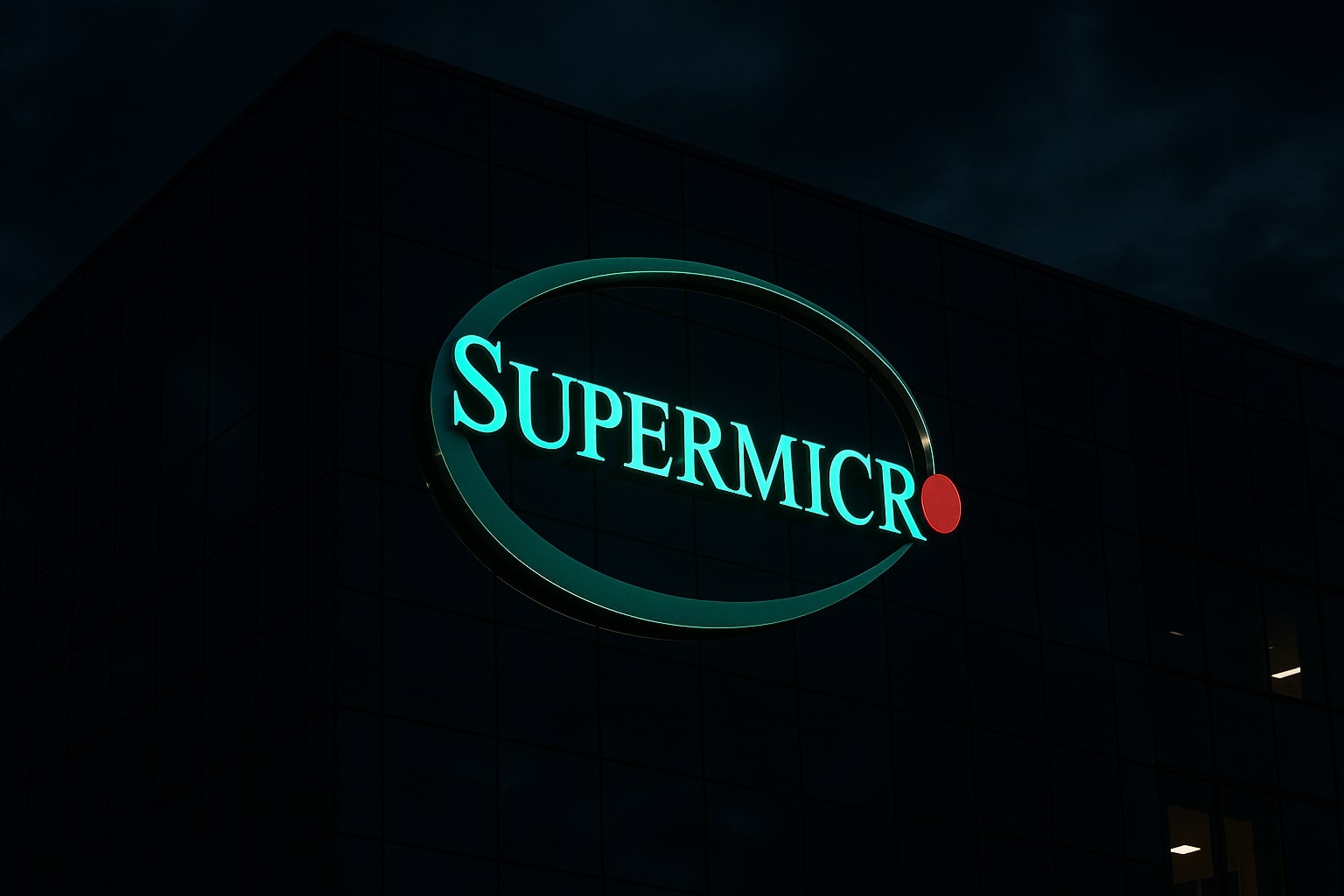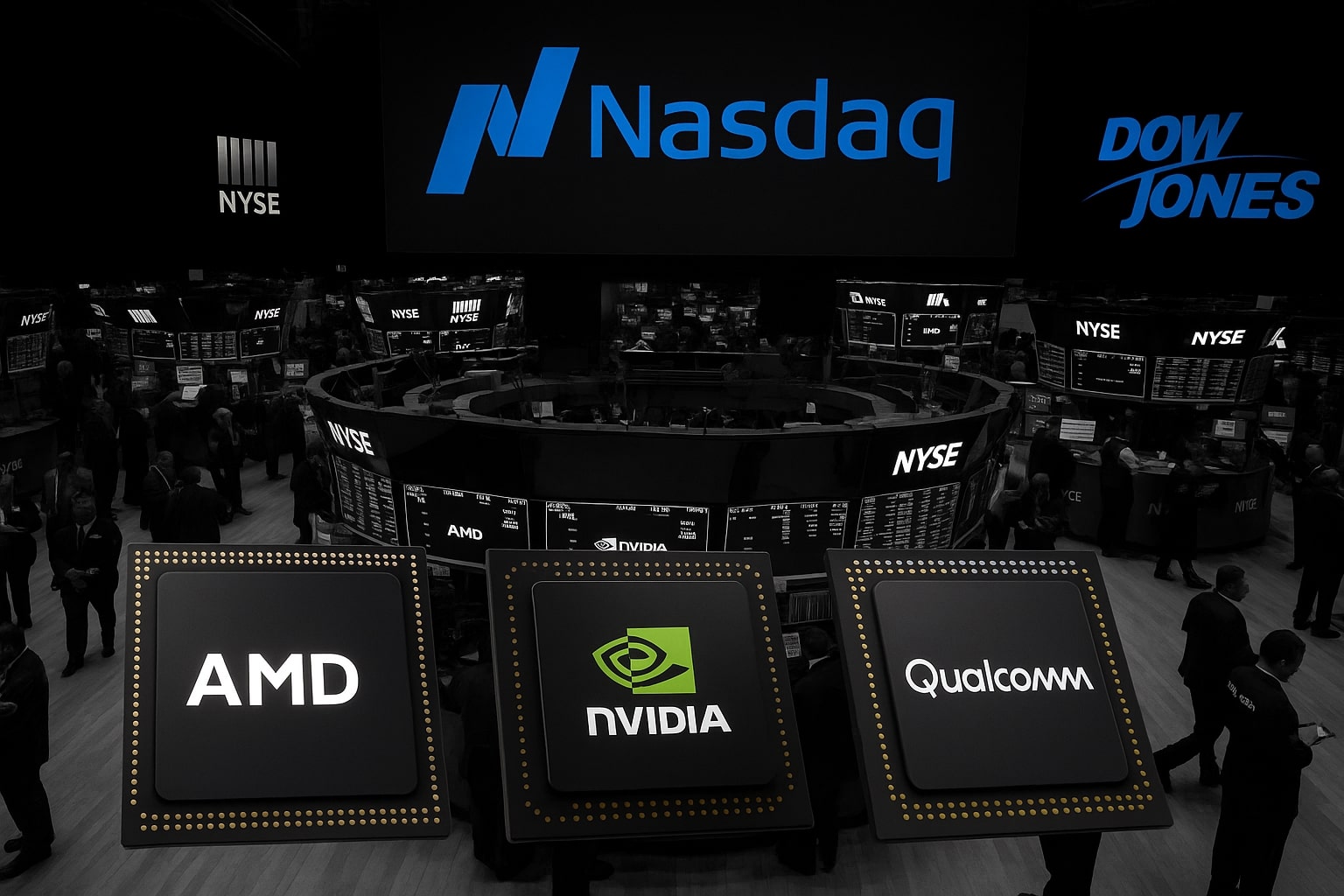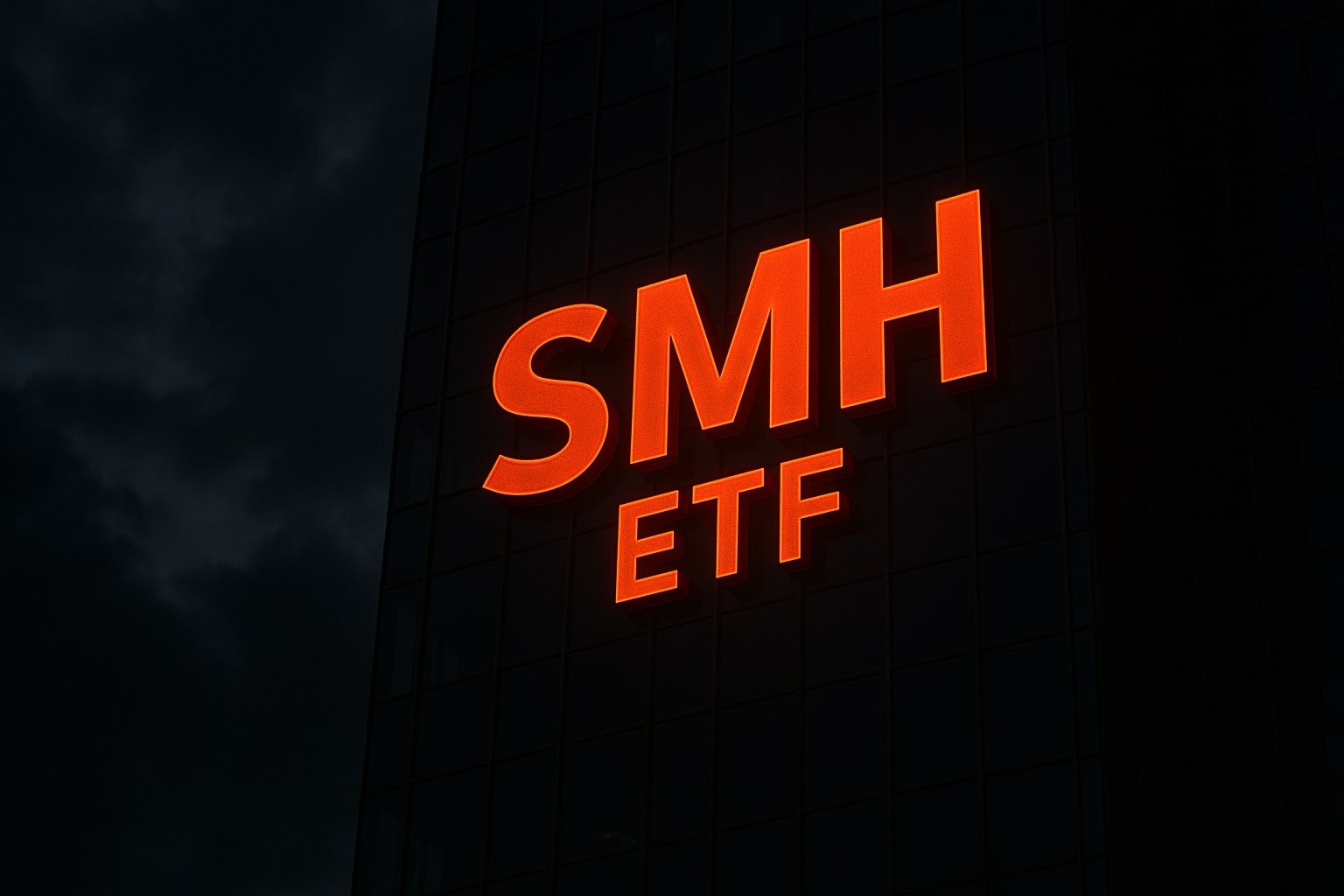
Intel Stock Price Forecast - INTC Shares 18A Breakthrough, $30.9B Cash, and U.S. Stake Signal $55 Upside
Intel stock hovers at $37.14, down 3.23%, as Q3 2025 profit jumps 124%, free cash flow spikes 258%, and AI-PC + foundry strategy set stage for a 2026 re-rating toward $52–$55 | That's TradingNEWS
NASDAQ:INTC — Intel Faces Its Defining Moment as 18A Execution, AI Strategy, and U.S. Government Ownership Reshape Its Future
The story of Intel Corporation (NASDAQ:INTC) has entered its most complex and consequential phase in years. Trading at $37.14, down 3.23% (-$1.24) on November 6, Intel finds itself balancing strong short-term recovery momentum with enormous execution pressure. The stock trades within a volatile range of $36.98 to $38.50, hovering just below the prior close of $38.38, while market capitalization stands at $180.66 billion and average daily volume at 128.76 million shares. The 52-week range spans $17.67 to $42.47, reflecting how dramatically investor sentiment has swung through 2025. Despite a staggering P/E ratio of 3,500.95, distorted by compressed trailing earnings, Intel’s valuation story is not about the past—it’s about whether its foundry ambitions and AI acceleration programs can convert government-backed liquidity into lasting profitability. The market is testing Intel’s credibility at every support and resistance line, with $37 serving as an immediate psychological pivot; above $38.50, a retest of $40–$42 becomes viable, while a loss of $36.90 could drag the stock back toward $35 and expose the next layer of fragile confidence.
Quarterly Performance: A Financial Rebound Built on Discipline and Cost Control
Intel’s Q3 2025 earnings surprised both investors and analysts with clear operational improvement. Revenue rose to $13.65 billion, up 2.78% year-over-year, while operating expenses dropped 19.73% to $4.36 billion, underscoring management’s aggressive focus on expense optimization. Net income surged 124.42% to $4.06 billion, boosting net profit margin to 29.76%, more than doubling from last year’s 13.3%. Earnings per share reached $0.23, up 150%, reflecting improved pricing and product mix. EBITDA stood at $3.87 billion, advancing 11.46% year-over-year, while effective tax rate remained low at 6.65%, providing further tailwind to net profitability. These numbers prove that Intel’s turnaround effort is gaining operational traction, but they also conceal a crucial tension: the core business is still heavily dependent on cost compression rather than top-line expansion. Cash reserves rose 28.44% to $30.94 billion, and total assets climbed 5.67% to $204.51 billion, while liabilities fell slightly to $87.78 billion, leaving equity at a solid $116.73 billion. With 4.77 billion shares outstanding and a price-to-book ratio of 1.72, Intel has regained balance sheet credibility—but not yet investor conviction that the recovery is self-sustaining.
Cash Flow Mechanics: Liquidity Strength Masking Structural Weakness
The company’s liquidity position has dramatically improved, with net change in cash up 157.87% to $1.45 billion and free cash flow soaring 258.86% to $4.59 billion. However, the quality of cash generation remains uneven. Cash from operations plunged 37.2% to $2.55 billion, a reflection of working capital friction and heavy inventory management. Capital expenditures remained intense, with $6.25 billion in cash used for investments, down 126% from last year, emphasizing Intel’s long-term bet on manufacturing self-sufficiency through EUV and packaging expansion. Financing activities added $5.15 billion, up 235.86%, primarily from government-linked capital infusions and strategic equity placements. The narrative here is clear: Intel is no longer starved for capital, but the efficiency of that capital is what will determine if this turnaround becomes more than another cycle of cost-driven reprieve.
18A and Foundry Services: The Core of Intel’s Reinvention Strategy
Intel Foundry Services (IFS) sits at the center of the company’s structural transformation, both as an opportunity and a risk. The business has incurred approximately $13 billion in cumulative losses in recent quarters, yet it also represents Intel’s clearest pathway to regain manufacturing relevance. The company’s 18A process, expected to reach high-volume manufacturing in 2025, aims to match TSMC’s 2nm class technology, while the 14A node scheduled beyond 2026 could extend this trajectory. Intel targets 10–12% of global foundry market share by 2026, supported by an $8.5 billion CHIPS Act grant and other government incentives. If executed correctly, 18A could reposition Intel as both a supplier and competitor within the semiconductor supply chain. However, margin sustainability depends on external customer adoption—without consistent third-party wafer orders, IFS remains a high-capex drain. Each five-percentage-point improvement in utilization translates into hundreds of basis points of gross margin expansion, underscoring how fragile the balance remains between operational scale and underused capacity.
AI Expansion: From Gaudi and Edge Intelligence to the AI PC Revolution
Intel’s AI roadmap, fragmented yet ambitious, is central to its market re-rating. The company’s Gaudi 3 accelerator platform saw shipment forecasts cut by over 30% to 200,000–250,000 units, but Intel still expects 8–9% global AI training market share in select enterprise workloads. The more pragmatic growth vector lies in AI inferencing, where Intel’s integration of CPUs, NPUs, and accelerators could capture steady demand from large-scale data centers and hybrid cloud operators seeking efficiency over raw speed. The company’s collaboration with Cisco Systems on edge-AI infrastructure represents a practical commercial bridge between traditional computing and AI workloads deployed outside hyperscale environments. This partnership integrates Intel silicon across Cisco’s industrial and telecom platforms, leveraging power and latency constraints as competitive differentiators. In the client segment, Intel’s drive to ship 100 million AI-powered PCs by the end of 2025, capturing an estimated 30% of the Windows PC ecosystem, is its most visible path to mass-market AI monetization. These systems—powered by upcoming “Panther Lake” and “Lunar Lake” chips—are designed to anchor recurring software and NPU-enabled service revenue, transforming Intel’s identity from a chip vendor to a hybrid computing platform provider.
Government Equity and SoftBank Stake: A Strategic Safety Net with Strings Attached
The summer 2025 agreement between Intel and the U.S. Department of Commerce fundamentally reshaped its ownership structure. In exchange for accelerated CHIPS Act disbursements, Intel issued roughly 433 million common shares and warrants for an additional 240.5 million shares, effectively granting the U.S. government a large strategic stake. This arrangement ensures funding stability but increases political scrutiny and execution accountability. The partnership with SoftBank, which invested $2 billion in new Intel equity, complements this by reinforcing external confidence in Intel’s liquidity position and AI ambitions. While these alliances secure capital and de-risk large-scale foundry expansion, they also limit flexibility and raise the stakes for every milestone missed. Intel is no longer just a public company—it is now a semi-sovereign industrial project that must deliver technological sovereignty to justify its backing.
Q4 Outlook: A Conservative Guide That Demands Outperformance
Intel’s Q4 2025 guidance remains deliberately restrained, forecasting $12.8–$13.8 billion in revenue, gross margin of 36.5%, and EPS of $0.08, all lower year-over-year due to Altera’s deconsolidation and product ramp costs. The strategy appears intentional—lower the bar, then deliver a beat. This playbook fueled the recovery from the $17.67 lows earlier in the year to the $42.47 highs, but sustaining this credibility now depends on consistent delivery. Analysts are divided: Tigress Financial raised its target to $52 with a “Buy” rating citing improving product cadence, while Bank of America downgraded the stock to “Underperform,” warning of valuation risk given weak foundry profitability. Consensus across Wall Street sits around Hold, with upside targets clustered between $45–$50, contingent on execution of 18A manufacturing and external customer onboarding by mid-2026.
Read More
-
Super Micro Computer Stock Price Forecast - SMCI Falls After Earnings Miss but Raises Full-Year AI Revenue Outlook
06.11.2025 · TradingNEWS ArchiveStocks
-
XRP Price Forecast - XRP-USD Holds Near $2.30 as Ripple’s $500M Raise and Mastercard Deal Redefine Its Market Path
06.11.2025 · TradingNEWS ArchiveCrypto
-
Oil Price Forecast - WTI and Brent Crude Retreat Below Key Levels as Saudi OSP Cuts
06.11.2025 · TradingNEWS ArchiveCommodities
-
Stock Market Today - AI Stocks NVDA,AMD,QCOM Crash, Layoffs Spike, and Tesla’s $1 Trillion Vote Rattles Markets
06.11.2025 · TradingNEWS ArchiveMarkets
-
GBP/USD Price Forecast - Pound Holds Near 1.3060 Ahead of BoE Decision
06.11.2025 · TradingNEWS ArchiveForex
Valuation, Margins, and the Re-Rating Math
At the current price of $37.14, Intel’s valuation rests on forward optimism more than trailing fundamentals. Its 1.72x price-to-book aligns with mid-cycle norms, while cash holdings of $30.94 billion offset a portion of heavy capital intensity. The market values Intel not as a pure semiconductor producer, but as a high-beta restructuring story with asymmetric upside if execution meets timelines. Every 200–300 basis point improvement in gross margin directly expands free cash flow and earnings capacity by billions. Analysts modeling a normalized gross margin of ~45% by 2027 see potential for a multi-quarter re-rating to EV/EBITDA multiples of 11–13x, implying fair value in the mid-$40s to low-$50s range. Under a more optimistic execution scenario—successful 18A ramp, AI-PC shipment milestones, and stable macro conditions—Intel’s revaluation curve could extend toward $52–$55 by mid-2026, representing roughly 45% upside from current levels. Conversely, delays or weak customer uptake could return the stock to the low-$30s, where the support base was last tested during early 2025.
AI Ecosystem Integration and Potential SambaNova Deal
Reports of early-stage acquisition talks with AI-chip startup SambaNova Systems could become a pivotal narrative if confirmed. SambaNova’s domain-specific AI accelerators complement Intel’s Gaudi and CPU portfolios, offering potential synergies in enterprise inferencing. The deal would also advance Intel’s ability to compete with Nvidia in verticalized AI stacks by integrating hardware and software optimization. However, the negotiations remain exploratory, and failure to execute on such inorganic opportunities could slow Intel’s strategic catch-up in AI workloads.
Market Structure and Technical Outlook
The technical profile of NASDAQ:INTC suggests consolidation before direction. The stock oscillates around $37, with immediate resistance at $38.50 and $40, and structural resistance at $42.47, the yearly high. Key support holds between $36.90–$35.00, beyond which the next strong base sits near $33.20. Momentum indicators show mild fatigue but no breakdown; RSI near 47–49 signals neutrality, while the MACD has flattened after an early November divergence. Institutional volumes remain steady, implying controlled rotation rather than capitulation. If the stock reclaims $38.50 with conviction, it can retest the upper trend channel toward $40.50–$41.00; conversely, sustained closes under $36.90 invite downside tests to $35.00.
TradingNews Verdict: Hold with Tactical Bullish Bias — Execution is the Only Catalyst That Matters
The evidence points to a company that has stabilized its foundation but has yet to prove its transformation. With $30.94 billion in cash, improving free cash flow, and an equity partnership with the U.S. government providing unprecedented funding certainty, Intel has bought itself time. However, that time is not infinite. The 18A process, AI PC rollout, and external foundry client conversions are the make-or-break tests of 2026. In the current zone between $36.90–$38.50, the setup favors tactical long accumulation for disciplined investors, but without confirmation of foundry profitability, the name remains a Hold rather than a core Buy. If Intel converts engineering milestones into customer wins, the stock can re-rate toward the $52–$55 range over the next 12–18 months; if not, the next correction will retest the low-$30s. Intel’s turnaround is real in numbers, but its future will depend on execution—one wafer, one customer, and one node at a time.


















